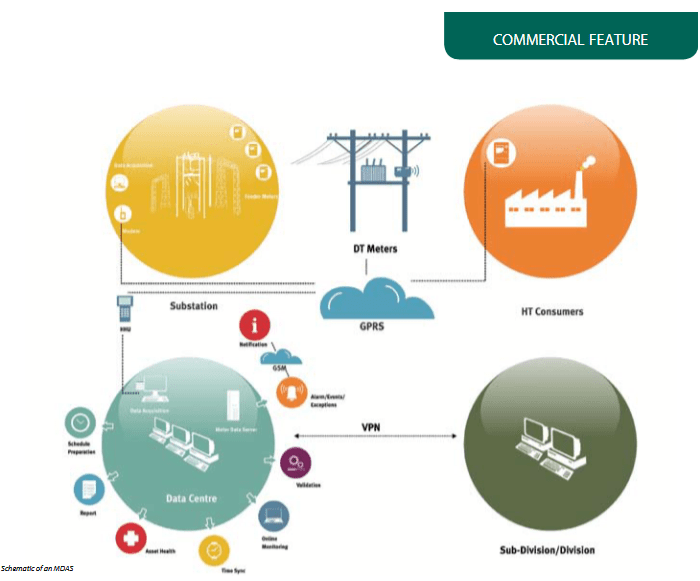Reforms within the power sector in India have been going on for more than a decade. Initially the focus was on bringing about structural changes like unbundling of the state electricity boards (SEBs) and the creation of independent generation, transmission and distribution companies. Subsequently, power generation became the focus. However, in the recent past, it has been felt that power distribution is the weakest link in the entire value chain, and that sustainable development and economic viability of the power sector is not possible unless electricity distribution issues are resolved.
With these objectives in mind, India’s national Ministry of Power launched the Restructured Accelerated Power Development and Reform Programme (R-APDRP) scheme in the year 2009-10. The programme covers towns with a population of more than 30,000 (10,000 in case of special category states). For its implementation, more than Rs500 billion (US$9.2 billion) has been allocated to this project. Separate funds have been allocated for R-APDRP Part A and Part B.
Part A of the scheme essentially covers the application of information technology in distribution utilities across the country. The scheme involves implementation of:
This entire exercise is aimed at establishing baseline data and a data collection system for the distribution utilities to capture aggregated technical and commercial losses (AT&C) in a precise manner without manual intervention and also to plan and implement corrective measures in Part B.
Part B of the scheme covers the strengthening, improvement and augmentation of the distribution system. This involves:
Further, distribution utilities have to work with their respective regulatory commissions to ensure that a part of the financial benefits arising from AT&C loss reduction are passed on to the consumers within the project area.
The main focus of the R-APDRP is:
MDAS is a key module of the R-APDRP. It comprises automatic meter reading of distribution transformers, feeders at substations and in order to provide meter data for further accounting of AT&C losses in the project areas.
Prime objective of MDAS in R-APDRP
The main objective of the MDAS is to acquire meter data from meters within the distribution system and consumer meters for:
An MDAS commences with the installation and connection of modems to meters in the field, perhaps more than 10 to 15 makes, and potentially across an entire state. The modem has to be configured with the appropriate parameters (baud rate, make of meter, network service provider (NSP) access point name (APN), etc.). It must be installed with the right communication cables for the different makes of meters. Meter data should be successfully polled to a back-end compatible application at central data centre (CDC) of that state over a GPRS network. That data should be sent at regular intervals, i.e. hourly or daily, based on requirements, without fail.
Features of MDAS
MDAS implementation
After the rollout of the R-APDRP by each state, deliveries of MDASs were commenced by the system integrators, the Power Finance Company (PFC) and the selected MDAS suppliers.
When the MDAS suppliers started implementation in the field and at the data centre, they faced issues that they had not envisaged. These later became impediments to the successful delivery of R-APDRP projects. These bottlenecks impacted the project delivery schedule,commercial viability and desired success from remote meter reading. Experience of R-APDRP projects and other AMR projects shows that 80-90% of meters can be read successfully using GPRS.
There are many challenges which need to be addressed before and during implementation of the MDAS solution to deliver a successful R-APDRP project. These challenges can be categorized under field, network, application and interface.

Challenges in the field
Challenges because of network signal strength
Application challenges
Interface challenges
Recommendations for mitigating the challenges
 Vivek pathak
Vivek pathak
He is an Assistant General Manager, Services Delivery and Project Implementation. He has over 19 years’experience in the power domain, including working in the management of the utility power distribution sector. His experience of working with utilities has proved invaluable for work in the areas of application development and deployment, power system improvement, meter data analytics and large field implementations. vivek.pathak@securetogether.com